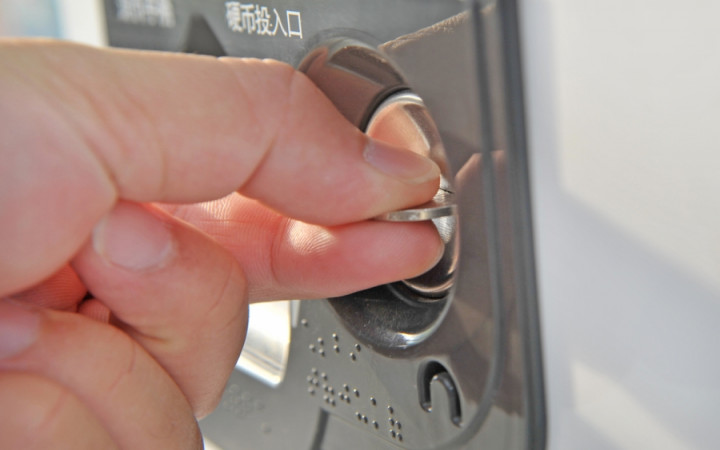Today’s Wonder of the Day was inspired by xavier. xavier Wonders, “How does a vending machine work?” Thanks for WONDERing with us, xavier!
On a hot day, there’s nothing quite like dropping some change into a vending machine and listening as a cold drink makes its way to the exit chute. It’s hard for most of us to imagine a time when we couldn’t get a cold drink or a snack — or even rent a movie — from a nearby machine.
There are a wide range of vending machines around the world today. In return for payment using coins, bills, or credit, vending machines dispense everything from drinks and snacks to newspapers and DVDs. Some of the more interesting vending machines sell electronics, live fishing bait, French fries, cars, and blue jeans.
Hero of Alexandria made a machine that dispensed holy water in the first century. This may have been the first vending machine. In the early 1880s coin-operated postcard vending machines debuted in London, England. The first United States vending machine sold gum on a New York City train platform starting in 1888.
Long ago, you often needed to have exact change to use a vending machine. Today, though, vending machines accept coins, paper money, and even credit cards. They can also give coins and bills as change.
How did vending machines get to be so smart? How can a machine tell a quarter from a dime? How does it know the difference between a five-dollar bill and a one-dollar bill?
Vending machines that take paper money can do things most people can’t do. They can tell different bills apart by looking at special features that are unique to each bill. They do this by making careful observations.
For example, some vending machines can take dollar bills by using optical scanners that check them using light. These machines have tiny sensors or small cameras that take pictures of the bill you put in. Then they check those pictures for specific patterns that help them know what kind of bill it is.
Of course, it’s possible to print a picture of a bill that looks real. But vending machine makers have ways to check if the money is fake by using special features on the real bills.
Did you know that one-dollar bills use a special kind of ink that glows when you shine an ultraviolet light on them? Some vending machines can scan the glow from a bill using ultraviolet light to tell if it’s a real bill or not.
Currency bills are printed using special magnetic ink. Some vending machines can read the magnetic ink on the bill to check if it’s real and figure out how much it’s worth.
There are some vending machines that use special devices to check if the money you put in is the right size. They may also use a little bit of electricity to check whether the money is real. Different types of money conduct electricity in different ways.
Most machines use physical properties to recognize and check coins. Vending machines mostly look at the size, shape, and ridges of coins instead of studying what they are made from.
For example, a vending machine can recognize a quarter, because it is 0.955 inches in diameter, 0.069 inches thick, and has 119 ridges along its outer edge. This differs from a dime, which is 0.705 inches in diameter, 0.053 inches thick, and has 118 ridges.
Did you have any idea vending machines were that smart? Believe it or not, they’re actually getting smarter all the time. Many vending machines connect to the Internet wirelessly and transmit data to their owners. This can help the owners know which items have been sold and need to be restocked.
Some vending machines can take orders without you having to touch them. They have special devices that can understand hand signals, so you can use them without pushing a button. There are also vending machines where you can buy things by sending a text message from your mobile phone.
Many vending machines use spiral dispensing—this means the item you want to buy sits in a twisted metal rod that turns to give you the item you ordered.
Worried your bag of chips will get stuck in the machine? They’ve thought of that. There are infrared sensors near the bottom of the machine that will turn the spiral a little more if your item didn’t drop.
Have you ever used a vending machine? What did you buy? Would you buy from a vending machine again in the future?
Standards: CCRA.R.1, CCRA.R.10, CCRA.L.3, CCRA.L.4, CCRA.L.5, CCRA.L.6, SMP.5, SMP.4




